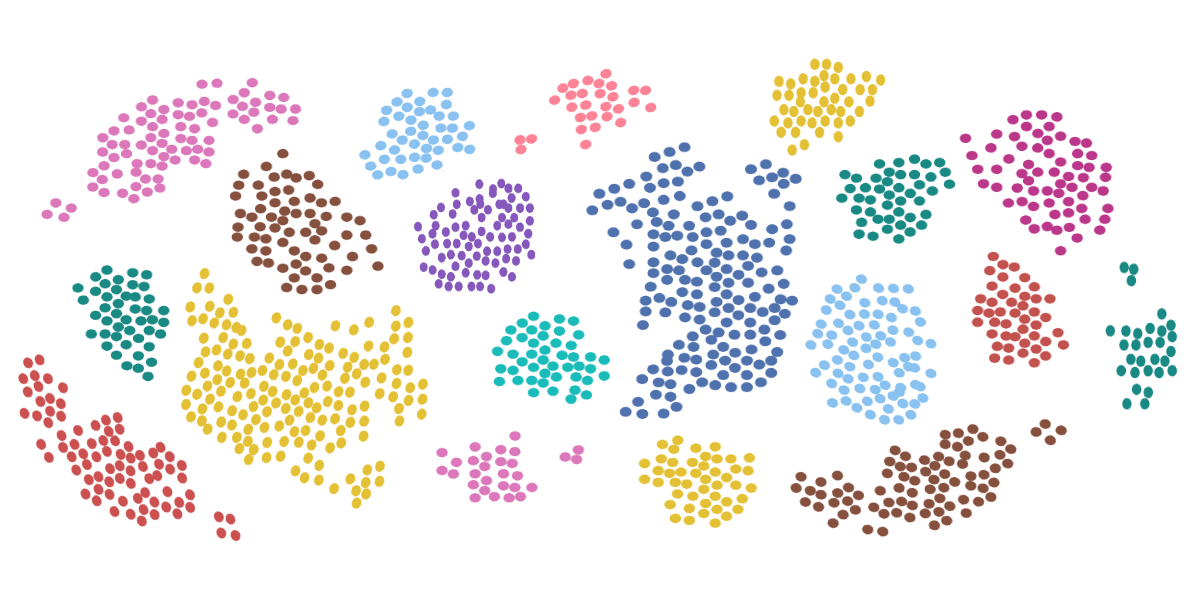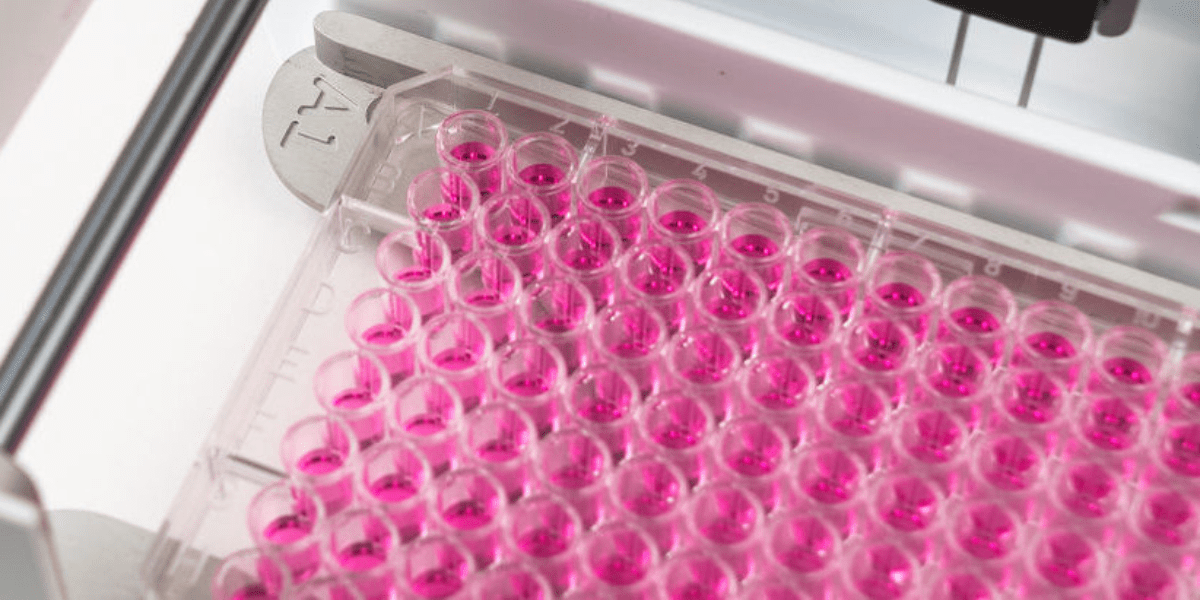Why Flow Cytometry in Immunology is Important

Let’s begin with a standard agreed-upon definition of immunology. How about one from the British Society for Immunology:
Immunology is the study of the immune system and is a very important branch of the medical and biological sciences. The immune system protects us from infection through various lines of defense. If the immune system is not functioning as it should, it can result in disease, such as autoimmunity, allergy and cancer.
Where does flow cytometry fit into this definition? And how important is the technique to this branch of science? (Spoiler alert: Very important.)
Let’s explore why.
Flow Cytometry | What is it?
We’ve already defined immunology, so let’s continue on the same page with flow cytometry.
- Flow cytometry by way of a flow cytometry machine is the measurement (-metry) of cell (cyto-) characteristics and properties in motion (flow).
It’s truly a wonder why they didn’t call the technique metry-cyto flow. Bad jokes aside, another equally valid definition of flow cytometry is:
- A technique that analyzes a heterogeneous cell population one cell at a time and can sort, count, and even isolate the different cells.
This second definition probably brings the imagination closer to why it’s such a necessary component of immunology. Before diving into the applications of flow cytometry within immunology, let’s break this second definition down further.
The Value of Flow Cytometry
Understanding what flow cytometry is from a fundamental perspective offers pointed insight into its value for immunology (so forgive us for harping on this point). The different facets of this technique include:
- Analyzes heterogeneous fluids. Immunology deals with the human immune system. Any sample you could take from a human—blood, saliva, bone marrow, urine, you name it—will assuredly not be homogenous.
-
- Blood isn’t just blood cells. Blood consists of five different types of white blood cells, red blood cells, platelets, dead cells, and in the case of a cancer test, possibly cancerous cells as well.
Thus, any test or technique used in immunology will need to be practical for a multivariate substance. Hence, flow cytometry.
- Analyzes cells one at a time. The reason flow cytometry is so successful with heterogeneous cell populations is that it analyzes cells one at a time. It does this by using the properties of fluid dynamics. Flow cytometry data enables the user to understand each cell type and its properties on a deeper level.
A sheath fluid, typically a saline-based solution or water, runs at laminar flow through the flow cytometer—which means the layers of fluid no longer mix. When the sample is injected into the sheath fluid, it funnels down into a single file line to pass through the laser. This process is known as hydrodynamic focusing.
Without utilizing hydrodynamic focusing, the cells would clump together when passing through the laser, and the flow cytometry data received would be unreadable.
- Runs multivariable analysis simultaneously. In immunological samples, where blood, bone marrow, or other fluids are taken to test, the number of cell populations living within it makes it troublesome to analyze. In order to sort and isolate the cells, physically or gated on the data, you need to know what cells you’re looking at. Multivariate histograms allow you to identify which data corresponds to what cell. These variables come from:
- Fluorescently labeled cells – By using antigens with fluorescent labels (or molecules that can stimulate responses in immune systems) that target and lock onto a specific type of cell’s exterior protein, you can separate cell populations by placing an electric charge on the labeled cells. Fluorescent dye makes this technique possible and the user can adjust the fluorescence intensity depending on the flow cytometry experiment. When the cell passes through the laser, the fluorochrome will get excited and release photons. This signals for an electric charge to be put on the cell. Magnets then pull individual cells into three separate directions-positive, negative, and neutral.
- Forward Scatter – The laser light that is refracted past the cell is picked up by a photomultiplying tube (PMT) on the other end. Data from forward scatter (FSC) will often tell of the cell’s size. It also helps to separate useless data like debris, dead cells, doublets, etc.
- Side Scatter – The scattered light that is refracted at a 90-degree angle shows different cell characteristics. Typically, the side scatter (SSC) represents the granularity of the cell, or the complexity of its nuclear structure.
Related: Flow Cytometry Gating: Everything You Need to Know
Combining all this information into single variable histograms, density plots, and more allow for complex heterogeneous fluids to be separated cell by cell.
- Sorts cells efficiently. Modern flow cytometers can analyze and sort thousands of cells per second, making it the most efficient cell sorting technique. This is possible because once the fluid is injected, the electronics systems paired with the optics system (for information) automates the entire process.
- Keeps cells alive. At least, the flow cytometers can keep the cells alive. Traditionally, the cells went through a rigorous journey that often caused apoptosis and oncosis (two methods of cell death) from over-oxygenation and too high of pressures. More modern flow cytometers, like the one offered by NanoCellect, reduces the interior pressure to keep cells happy and alive.
The WOLF Cell Sorter uses only 2 psi, making it thirty times more gentle than standard flow cytometers. This ensures the cells can continue to proliferate once they’ve been sorted, guaranteeing further testing.
This is particularly of interest in immunology when often the point of testing different cells is to see how they will react under different medications and treatments. If the isolating phase causes severe damage to the population, it becomes significantly harder to quantify positive results from potential treatments.
Now, let’s move away from the theory about why flow cytometry in immunology is important and dive headfirst into the practical applications.
Applications for Flow Cytometry in Immunology | Getting Down to Specifics
Combining all the positives of flow cytometry mentioned above, it becomes easier to see the uses of flow cytometry in immunology. Some of the major uses include:
- Testing single cell stimuli response – When considering a new drug medication or treatment, it’s incredibly valuable to be able to test the stimuli response mechanisms of each cell population individually, in tandem with multi-cell tests. This helps to determine how each individual cell’s immunophenotype responds. Single cell genomics is the method used by researchers to analyze single cells by using a tissue sample.
- Understanding immune competence – A cell’s immune competence is its ability to produce antibodies as a fighting response to perceived threats (antigens). By using flow cytometry to isolate cell populations, immune competence can be measured against cell population, cell stage, and other relevant variables.
- Determining immunodeficiency – Because flow cytometers can count individual cells as they’re sorted and analyzed, the number of immune cells can be determined and contrasted against known healthy values. If there are deficiencies present, flow cytometry is an efficient way to determine this.
- Tracking proliferation of particular cells – Similarly, if a known disease or cancer is present in a patient’s sample, flow cytometry can track the proliferation of particular cells. This can determine the aggressiveness or severity of the disease.
In its essence, flow cytometry allows you to shrink down to the microscopic level and look at the blood sample for what it is-what cells are within it, the percentages of cell population, the healthiness of the cells, and how they react to certain stimuli. With this method, biological and medical researchers have been able to study heterogeneous fluids in a manner impossible for previous generations.
Related: How to Complete Cell Cycle Analysis via Flow Cytometry
NanoCellect’s Role in Immunology
To create these opportunities, the right machinery is necessary. That’s why NanoCellect created the WOLF Cell Sorter—as a way to improve upon the cell sorting process while doubling down on all the advantages a flow cytometer offers.
The WOLF Cell Sorter offers the following benefits:
- Low Internal Pressures – By keeping internal pressures below 2 psi, the cell populations are handled gently. As mentioned before, the WOLF Cell Sorter is comparatively 30 times gentler than standard flow cytometers.
- WOLFViewer – This flow cytometry software makes it easy and intuitive to work the machine and analyze results. Both beginners and experts will be able to follow the easy-to-use workflow menu and perform tests within the first day.
-
- Complex settings are controlled within an Advanced Settings menu for the expert who needs to measure highly specific data.
-
- Exporting data is incredibly simple and the file formats are compatible with all modern flow cytometry software.
-
- Images and data plots are easy to transfer off the WOLFViewer and onto your presentations.
- Disposable microfluidic cartridges – To avoid cross contamination worry, the WOLF Cell Sorter uses disposable cartridges.
- Flexible for any laboratory – Coming in at under 2 cubic feet, this machine fits in any lab for bulk or single-cell sorting.
If you want happy, healthy cells after they’ve been sorted, NanoCellect is here to help.
Immunology and Flow Cytometry
When it comes to immunology, flow cytometry reflects three core values: efficacy, speed, and practicality.
- Efficacy – Because immunological responses are highly dependent on individual reactions, flow cytometry helps to isolate cells for further testing.
- Speed – Being able to sort thousands of cells per second helps to ensure that the flow cytometry testing is done quickly and efficiently.
- Practicality – Flow cytometry handles real-world solutions (heterogeneous fluids like blood, saliva, bone marrow) and sorts the cells as necessary.
It’s for these reasons flow cytometry is so important and applicable in the field of immunology. And it’s also why many labs are switching their machinery to NanoCellect—because the WOLF Cell Sorter doubles down on these core values.
Sources:
- British Society for Immunology. What is immunology? https://www.immunology.org/public-information/what-is-immunology
- Bitesize Bio. Hydrodynamic Focusing in Flow Cytometry. https://bitesizebio.com/32361/hydrodynamic-focusing-flow-cytometry/
- News Medical Life Sciences. Flow Cytometry in Immunology. https://www.news-medical.net/life-sciences/Flow-Cytometry-in-Immunology.aspx
- British Society for Immunology. Flow Cytometry. https://www.immunology.org/public-information/bitesized-immunology/experimental-techniques/flow-cytometry



